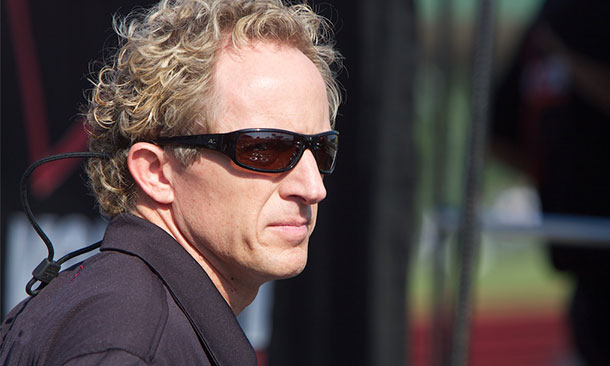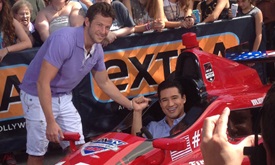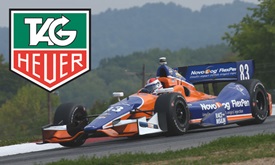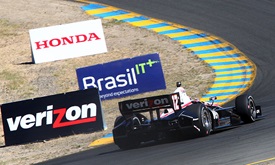Broadcaster, racer Beekhuis in steward role
AUG 22, 2014
SONOMA, Calif. – Early in his racing career, Jon Beekhuis received a penalty and was placed on probation for over-aggressive driving. Indirectly, years later that period has played a role in the NBCSN broadcaster moving into a steward position in Race Control for the final two Verizon IndyCar Series events of the season.
“Looking back now, I think that was a good thing,” said Beekhuis, who was the 1988 Indy Lights champion and competed in CART among other racing series. “By nature, all drivers will push the envelope whatever the cost. An official’s job is to communicate as best as possible where these limits lie. In my opinion drivers will stay inside these lines as long as they believe everyone is being held to the same standard.”
Click it: Entry list || Get GoPro Grand Prix of Sonoma tickets
Beekhuis will join race director Beaux Barfield and INDYCAR vice president of competition Brian Barnhart in Race Control above the main grandstand at Sonoma Raceway this weekend and at Auto Club Speedway for the MAVTV 500 next week at Auto Club Speedway in Fontana, Calif.
A three-steward system comprised of the race director, driver steward and an INDCYAR official or independent steward was introduced for the 2014 Verizon IndyCar Series season to adjudicate competitor on-track sporting infractions when warranted. The stewards utilize all available camera views, timeline data and rulebook references. Johnny Unser, Mazda Road to Indy driver coach and former driver, and Indy Lights Presented by Cooper Tires race director TonyCotman have been the other invited stewards this season.
INDYCAR president of competition and operations Derrick Walker said that for 2015 the steward program will be expanded and Verizon IndyCar Series competitors will have the ability to nominate driver and independent stewards. Before selection, all stewards will be drilled on sporting rules and regulations and have no affiliation with any of the competitors.
“Race Control and the development of the steward system is something that will evolve over the next couple of years. It’s not like throwing a switch and you get a steward system that is consistent and is fair,” Walker said. “Our first steps have been on the hardware side – getting more camera views, better quality views and a quicker replay. On the steward side, we’ve deliberately kept it consistent to just a few consultants who have had Race Control experience in the past.
“Now we’ll start to introduce others. As once a competitor myself, I viewed Race Control as a unit that has to run the show and be as fair and consistent as possible. If you bring in independents who watch the race unfold with an independent view, you potentially could get the purest and fairest system.”
Beekhuis and Walker arranged an orientation in Race Control during the Detroit doubleheader weekend (May 30-June 1), observing all sessions and attending the post-event meeting in which Walker and the stewards review race video. Occasionally, drivers are requested to join in the conversation to weigh in on incidents or a particular point of the race in which they were involved.
“Fourteen people were managing a tremendous amount of ever-changing information and it was obvious each person was a specialist in their own area,” Beekhuis said of the experience. “I suppose you could say it's like air-traffic control for 22 planes all wanting the same runway. To their credit, even with all the drama of Detroit there was no screaming and shouting. It was clear to me they had all been there before.
“What’s not apparent on air is how many camera angles, car/track data and observer information is reviewed before penalties are levied. And unlike the NFL for example, play doesn't stop when officials ‘go under the hood.’ This all has to be done while the race charges ahead at full speed; definitely not an easy exercise.”



















